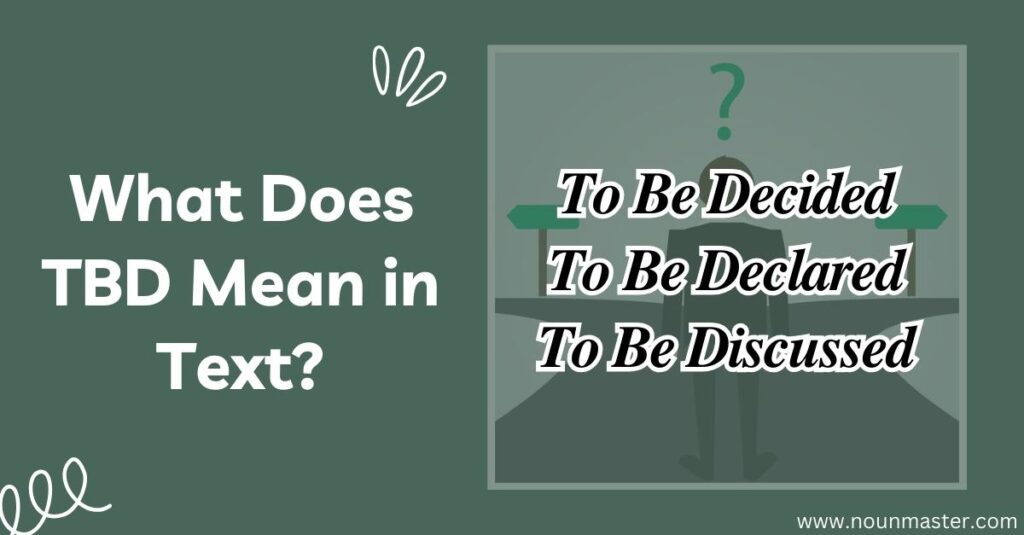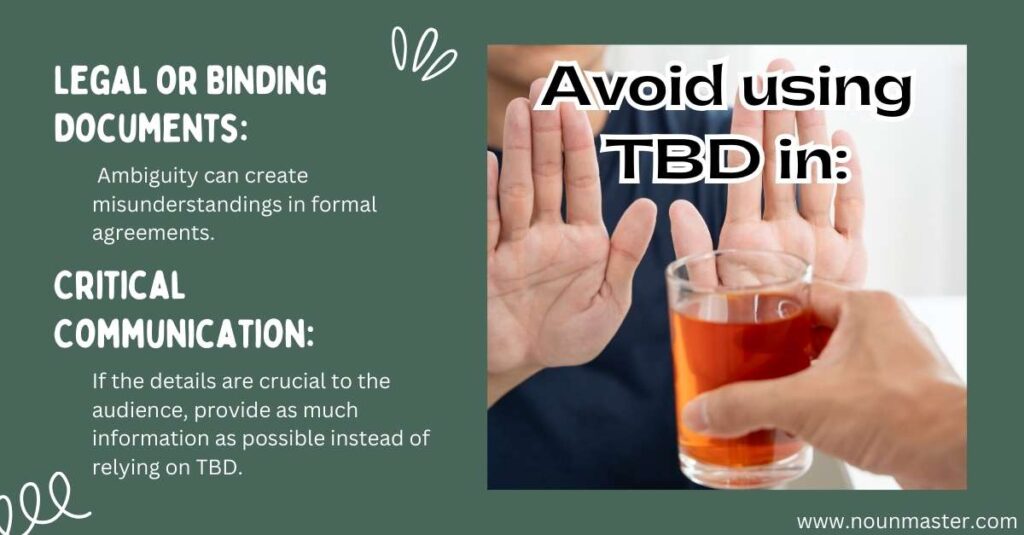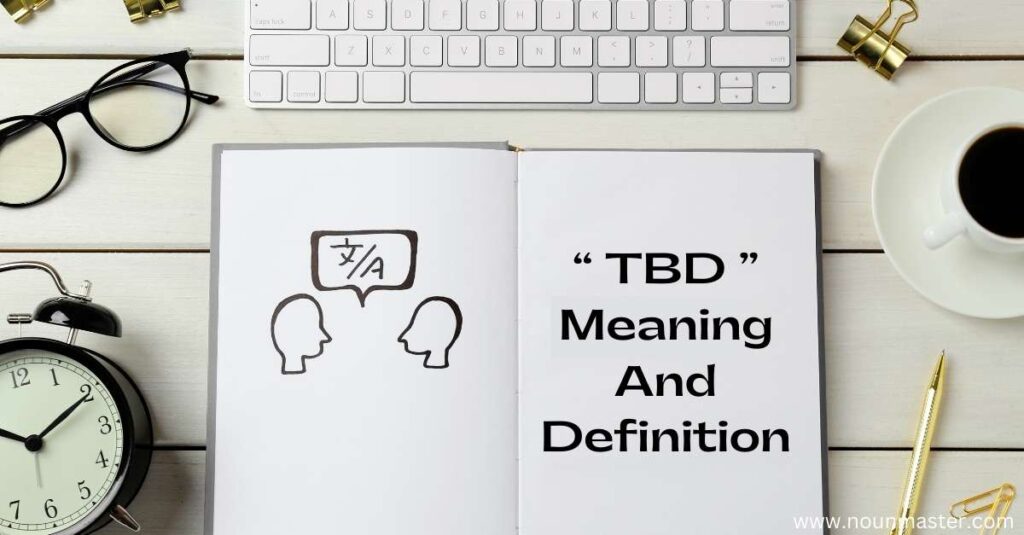Have you ever come across the abbreviation “TBD” and wondered what it means? You’re not alone. While it’s a common placeholder, its meaning and usage can vary depending on the context.
This article will break down what TBD stands for, where and how to use it effectively and provide examples to help you master its application.
What Is TBD?
At its core, TBD is a practical abbreviation used to represent uncertainty with a promise of resolution. The term is used to communicate that while specific details remain undecided, they are being actively worked on and will eventually be disclosed.
For example:
- The meeting time is TBD.
- The guest list for the event is TBD.
In both cases, TBD provides clarity by letting people know that updates are forthcoming.
Role Call or Roll Call: Which One is Correct?
What Does TBD Mean?
TBD stands for “To Be Determined”, a commonly used abbreviation in both formal and informal settings. It is a placeholder used to indicate that certain details, decisions, or information are not yet finalized but will be resolved or disclosed in the future. It’s a simple way to keep communication clear when all the pieces aren’t in place yet.
For example:
- The event date is TBD.
- The location for the conference is TBD.
TBD is a versatile acronym used across event planning, business, and everyday life to communicate pending decisions.
What Does TBD Mean in Text?
In digital communication, TBD has similar meanings but is often used casually to denote unfinished plans or unknown details. While primarily understood as “To Be Determined,” in informal settings, it can also mean:

Examples in text:
- What time are we meeting? TBD for now.
- I’ll confirm the dinner location—it’s still TBD.
In texting, TBD is quick, efficient, and avoids unnecessary elaboration when plans are still in progress.
Where and When Is TBD Used?
TBD is widely used in different scenarios, such as:
- Event Planning: Often used to address incomplete event details, like the time, venue, or guest list.
- Example: We’re excited for our annual gala—venue and time TBD.
- Business and Workplace: In professional contexts, TBD appears in project management, meeting schedules, and business decisions.
- Examples:
- The deadline for this report is TBD.
- The company’s expansion plans are TBD until the board meeting.
- Examples:
- Personal Life: Used to coordinate informal plans with friends or family.
- Example: We’re planning a family trip—destination TBD, but we’re leaning toward the mountains.
- Education: TBD is used in schools to indicate pending grades, project results, or schedules.
- Example: The date for the final exam is TBD.
Medicine and Science: In medical or scientific fields, TBD may refer to Tick-Borne Disease or other specialized terms, but the broader meaning remains the same.
Wifes or Wives: Which is Correct?
TBD vs TBA vs TBC
People commonly use TBD, TBA, and TBC as abbreviations to indicate pending information, but each abbreviation carries a distinct meaning.
While people often confuse TBD, which stands for To Be Determined, with similar placeholders, it has its own specific use. Here’s a quick comparison to clarify their differences.
| Abbreviation | Full Form | Meaning | Example |
|---|---|---|---|
| TBD | To Be Determined | The decision or information has not yet been made. | The event date is TBD. |
| TBA | To Be Announced | Information is finalized but not yet publicly shared. | The winner of the contest is TBA. |
| TBC | To Be Confirmed | Details are agreed upon but need final verification. | The project timeline is TBC by the client. |
How to Use TBD Effectively
Here’s how you can incorporate TBD into your writing or speech:
- The new product’s release date is TBD, but we’re aiming for early next year.
- The guest list for the party is TBD; we’ll confirm it soon.
- The next meeting time is TBD while we coordinate schedules.
TBD is especially useful for ensuring transparency while showing that updates will follow.
Why Use TBD?
TBD is an effective communication tool for several reasons:
- Clarity: It informs others that details are undecided without causing confusion.
- Flexibility: It allows plans to progress even when all details aren’t finalized.
- Universality: TBD is understood across industries, cultures, and casual conversations.
When Not to Use TBD

Synonyms and Alternatives for TBD
While TBD is the most common abbreviation for undetermined details, similar terms may be used:
- TBA (To Be Announced): When information is finalized but not yet shared.
- TBC (To Be Confirmed): When details are agreed upon but need confirmation.
Pending: Another simple alternative to indicate that something is unresolved.
Final Thought
TBD is more than just an abbreviation; it’s a communication tool that bridges the gap between planning and finalization.
Whether in business, event planning, or casual texting, it allows for transparency and flexibility when details are pending.
By understanding and using TBD effectively, you can keep conversations clear, concise, and productive—even when the answers aren’t fully determined.
Today’s or Todays: Which is Correct?







